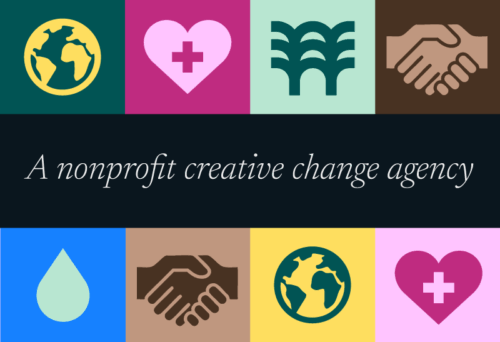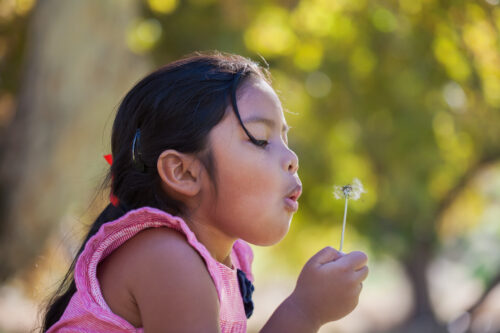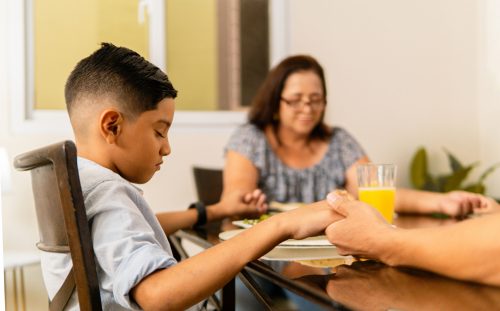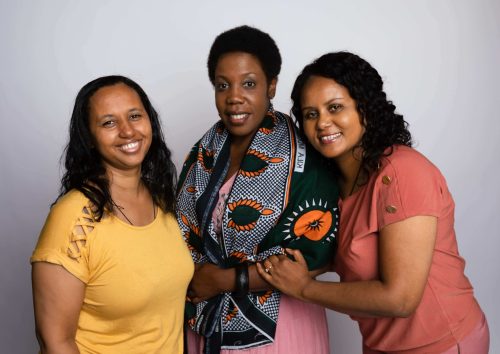
You might remember there was a period during our last “COVID” summer—vaccinations had rolled out in the spring and the elderly and those who were enthusiastically pro-vaccine rolled up their sleeves and were fully vaccinated by summer’s start. People were starting to plan travel, albeit carefully, and the delta variant had not hit the U.S. yet.
At this time the memes and snarky jokes were flying. The simple solution to the pandemic seemed so straight-forward, and finally within reach! If only some people would just get their heads out of the sand and get vaccinated. The mainstream perception of those who were not yet vaccinated was ideologically conservative, small town, rural and Trump country.
While this stereotype exists for a reason, Resource Media staff knew from previous work that national and online conversations were largely overlooking important multicultural and urban audiences.
It was around this time that Resource Media started working with Public Health, Seattle & King County (PHSKC) on their COVID vaccination awareness campaign, with the goal of reaching communities that had lagging vaccination rates: Black and African American, Latinx communities and younger adults.
This was our third vaccination campaign with the County, but the first where we were living in conditions where it’d be possible to meet up with community members, talk to them about their feelings about the vaccine, and have them participate in an advertising campaign. So we were obviously excited to get to talk to “real people” about their stories, thoughts and feelings about COVID and the vaccines.
In working with the County, they wanted to pursue creative that was empathetic, non-judgmental, and culturally resonant. They wanted content to be adaptable and flexible for different messages, and something that modeled listening to people and their concerns, rather than brushing them off. Because it seemed that not enough true and honest conversations about COVID vaccines were happening in real life, we wanted to encourage people to talk to their family and friends about the vaccines. We know from research (and intuitively) that people trust their own inner circles more than even well-respected doctors or an Instagram post.
Public opinion research on the types of people hesitant to receive COVID vaccines fell into a few different camps. “Watchers” were those who might eventually get vaccinated, but had skepticism or fears and want to wait to receive their shots. They want to watch and observe what potential side effects might arise, or have de-prioritized the vaccines and haven’t gotten around to making their appointments yet.
“System distrusters” were another major and important trend for people hesitant to take the vaccine. Due to systemic racism, they have been mistreated by the system—whether that’s past doctors, hospitals, insurance companies, local government, etc. They have no reason to trust the parties putting out health and safety information about the vaccine, and likely need another reason to compel them to take the vaccine.
The concept that we ultimately landed upon was COVID Conversations: Why Now? The message underscored the urgency of getting vaccinated now, and lent the impression of having an open conversation, rather than a didactic, finger-wagging message from government. We would host a number of different community members, in groups with their friends and family, to talk about why they chose to get vaccinated and why now is the time to get the COVID vaccine. We would roll these out in the form of short profile and longer conversation videos, social media ads and “fill-in-the-blank” user generated content.
This concept is an important departure from the hilarious yet snarky stock photo campaign in every way. While stock photos mean that content can be produced quickly, they rarely lend the authentic feel that we were going for, nor could we actually convey community members’ original stories and perspectives. The campaign needed to navigate some multi-layered and ever-present power dynamics. We wanted to speak to primarily communities of color, with an advertising campaign coming from the local county public health agency (a position of power and authority) in a community where white populations had higher rates of vaccination than Black and Latinx audiences. We knew that we needed to lead with empathy and authenticity, with trust and relationships at the center.
The next part is where local community connections are key. We reached out to friends, neighbors, past clients and our social media networks to assemble ready and willing candidates to star in our videos and ads. As well, PHSKC used their community navigator networks and partnerships with allied groups to recruit people representing a wide variety of backgrounds. And I personally pounded the pavement and visited Central District businesses to recruit Black entrepreneurs and small business owners.
As we were planning the shoots, we wanted to ensure that we were making cultural, ability and health accommodations for our community ‘talent.’ Here are some of the aspects that went into our planning:
- Disability access
- Bilingual releases, signage
- Compensation
- Food, religious dietary restrictions
- Location, parking, transit access
- Trauma-informed interviewing
- LGBTQ representation
- Dealing with the record Pacific Northwest heat wave!
Surprises
By listening to community members, we saw a breakdown of the stereotypes of “the unvaccinated.” In speaking with Spanish-speaking community members, we found that some did not yet know that they were eligible for the vaccines, despite the governor’s announcement and coverage in English language media. In speaking with young African American community members who were vaccinated, we found that they were still mistrustful, but ended up getting vaccinated because of an agreement they made with family. We also found that in speaking with African Americans that the freedom to travel, not necessarily a concern for catching COVID, was the major driver for their decision to vaccinate.
King County’s COVID vaccination rate, which includes the city of Seattle, is one of the highest in the country and the region leads the nation in low transmission rates—it’s currently at about 85% fully vaccinated for people 12 and older. Communities of color, which prior to this advertising campaign lagged behind white residents by a 14% margin, are now at 78%, 76% and over 95% vaccinated among Black/African American, Latinx and Asian Pacific Islander residents, respectively, which is on par with white residents. This has been the result of a huge effort to fund and host pop-up vaccine clinics with partners such as Para Los Niños and the Center for Multicultural Health, a robust testing program and strong preventative orders including masks requirements, vaccine mandates among certain employees and requirement of proof of vaccination or negative COVID tests to frequent certain businesses. Along the way, our community has complied with their vaccination cards, tough conversations with family, and navigating appointments for their boosters and shots for kids.
It seems like forever that we’ve been saying that we are not out of the woods yet, but here in the Pacific Northwest we’re quite used to large, rambling thickets of woods.
I’d like to offer big thank you to the many organizations and community members who took part in this Public Health campaign, notably:
The Federal Emergency Management Agency (FEMA)
Center for Multicultural Health
Chinese Information and Service Center
Indie Genius Media, video production
Presence, Ha Na Park
Resource Media team members: Xio Lugo, art direction, video production and project management, Frances Lee, production logistics and community recruitment.
If you’d like to see more detailed metrics on the outcomes of this campaign, and learn more about our approach to COVID work, please be sure to subscribe to our newsletter so you can be the first to hear about an upcoming webinar.
Sian Wu (she/her/她) is a managing director in the Resource Media Seattle office. She specializes in community health, multicultural and creative campaigns. This is her third COVID campaign with Public Health, Seattle & King County which she directed from her home in the Central District with the help of her two cats and the interruptions of her two children.
Originally published December 9, 2021.
More Insights and Resources


Winning pro-immigrant messaging in a time of injustice

